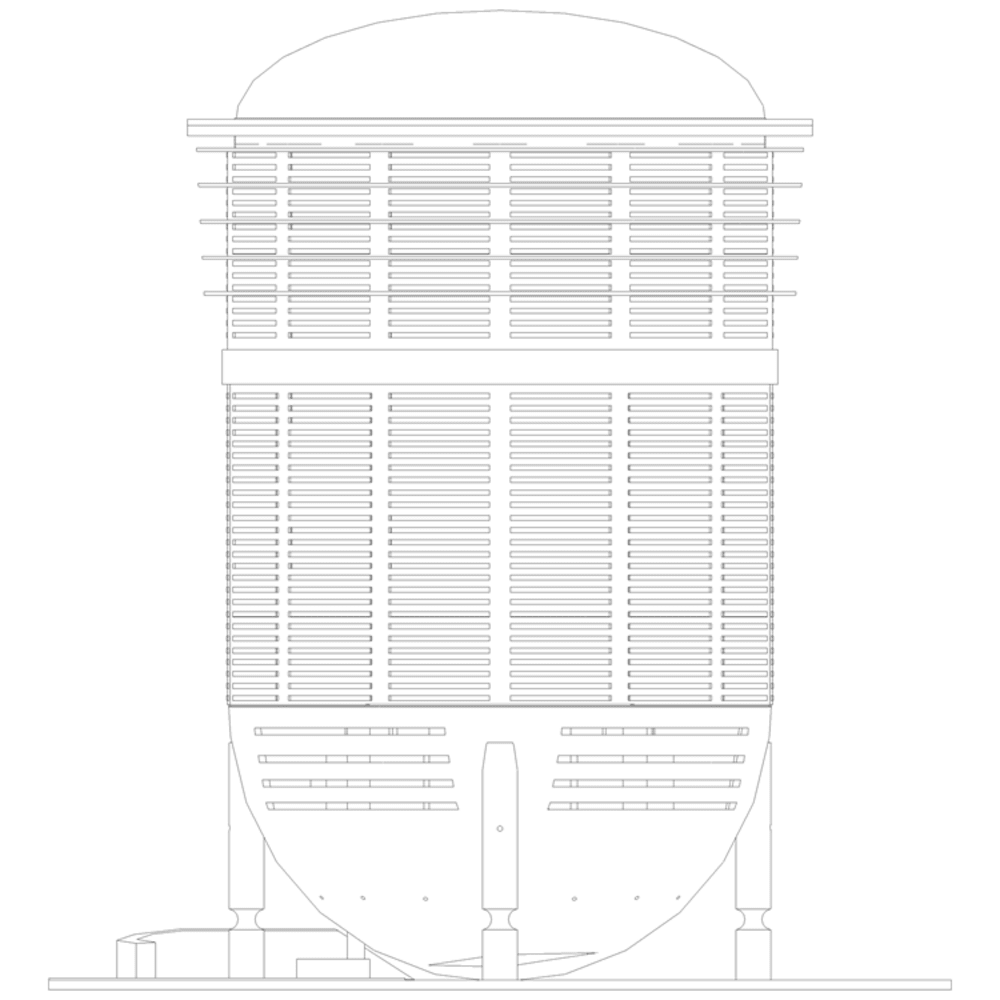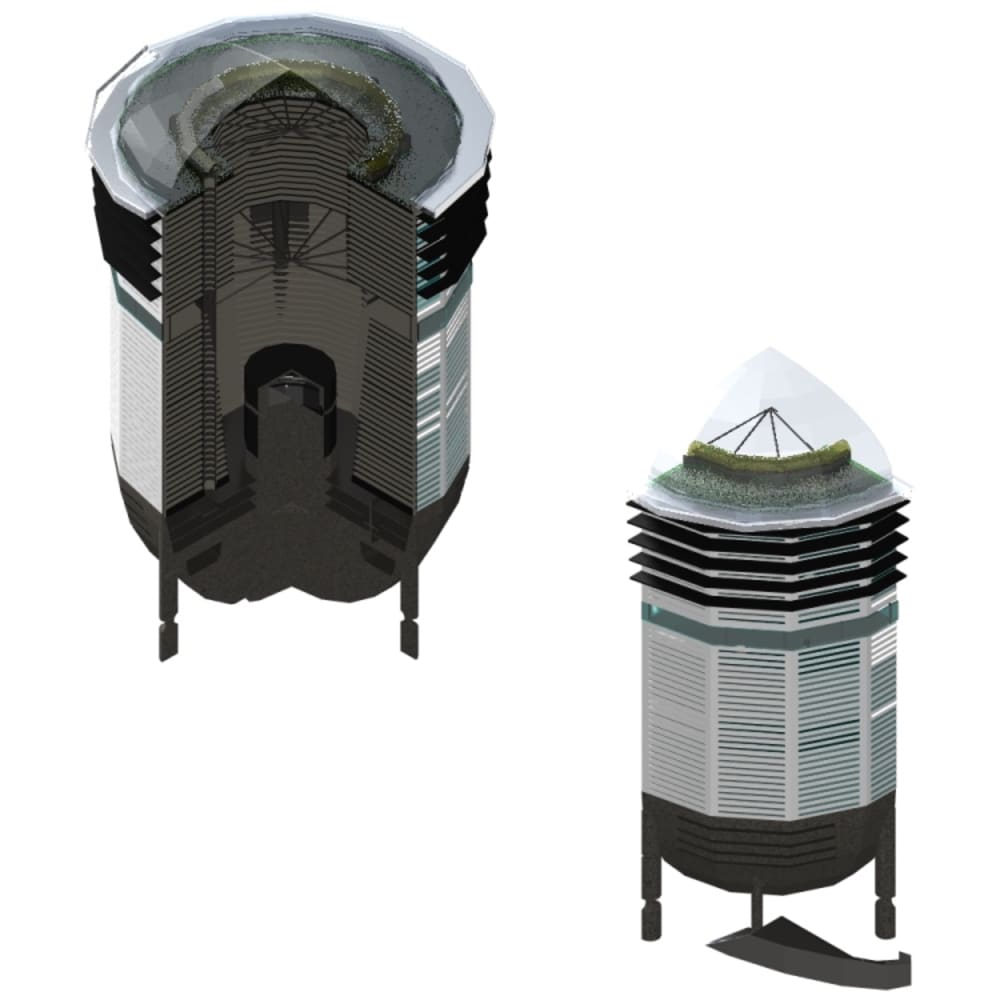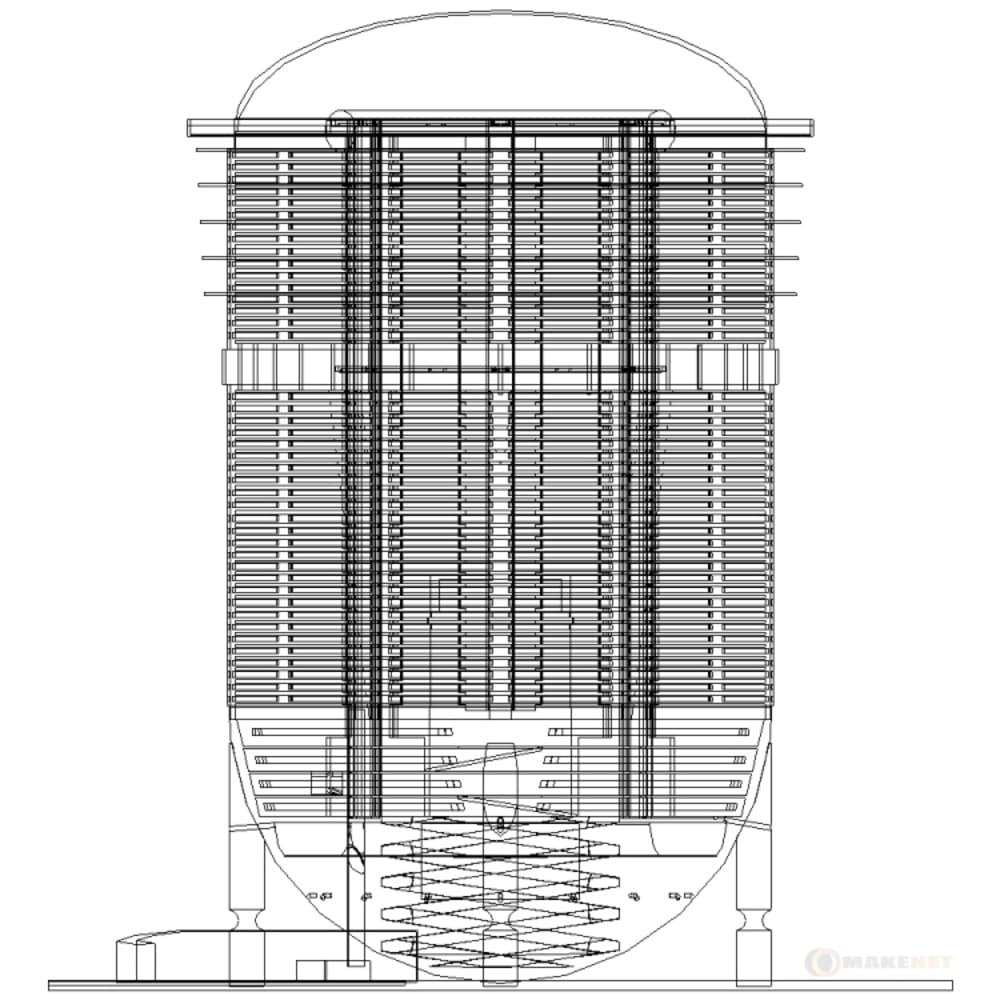Rocker Lowrise Earthquake Proof Building utilizes the principle at operation in a toy weeble. The build is designed to withstand the most severe earthquakes since it cannot fall over, since as the earthquake hits it will rock back and assume the upright position after the earthquake has passed underneath.
The building consists of a weighted hemispherical base (approximately 50% of the total weight of the building), a very solid underground foundation on which the base sits, composite steel/concrete/rubber stability pillars and the 'building part.'
The building part consists of a very rigid center column, on which the floor infrastructure is built upon. The materials of the rigid center frame are steel based. The floor and wall infrastructure is made from a special composite material made from: natural fibers, synthetic fibers, steel cable, adhesives and other conventional building materials. The material of floors and walls are designed to be flexible and light weight, and strong enough to withstand the forces of a severe earthquake. Additionally the materials of the floors and walls contains a special chemical agent, that when it is heated, releases a gas that will extinguish any fires.
To ensure the safety of the occupants of the building, at several strategic intervals along the height of building section, safety nets, similar to the ones used by acrobats, are installed in the center void of the building. Upon an earthquake, occupants are directed to jump from the floors into the center void of the building - landing in a acrobat safety net, which will allow a greater chance of survival for as many occupants of the building as possible.
To prevent any collapse of the internal flooring and walls into the safety nets, the majority of the floor and wall infrastructure is behind the rigid center frame.
The Rocker Lowrise Earthquake Proof Building design is thusly a realistic alternative for new buildings in earthquake prone areas.
Like this entry?
-
About the Entrant
- Name:Chris Morton
- Type of entry:individual
- Software used for this entry:TurboCAD
- Patent status:none








